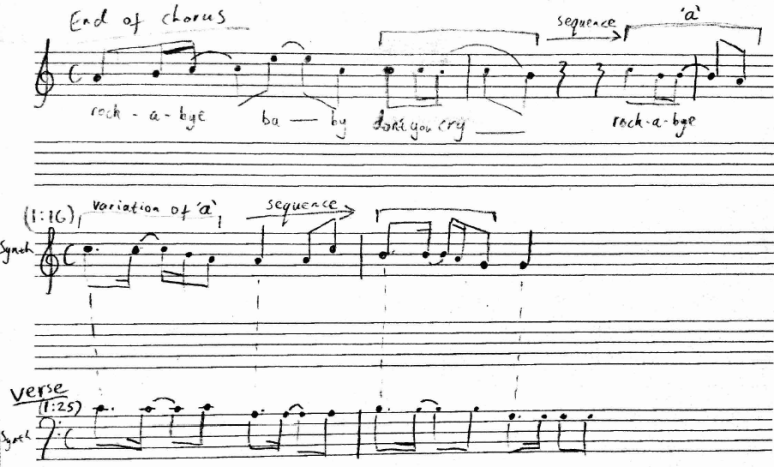What could be more irritating to ‘classical’, ‘trained’ musicians than this week’s UK no.1? Not just its contrived harmony, lack of melodic development, predictable structure and toneless, computerised bleepy-bloopey-ness. No, real irritation is only guaranteed if one accepts the music video as an integral part of this masterpiece: a barmaid inexplicably wears a swimming costume; guitarists pretend they are playing a sequenced synth line; a woman dances around a pole; a man pretends to play a sequenced synth line on a piano; more woman-on-pole; someone doesn’t even bother pretending they’re playing a cello; repeat to imperfect cadence… what well-calculated satire this presumably is.
Go on, watch it…
…see?
Though if you were really listening, you might have realised that there is, in fact, some quite satisfying melodic development in the instrumental melody after the first chorus (1:16) which continues the sequence the singer started at the end of the chorus to elucidate the connection between chorus melody and verse accompaniment, thus serving a combined structural/melodic function (see diagram below if you don’t believe me).

Or maybe you missed that, but enjoyed the stunning bridge (2:50-2:59), in which the delayed resolution of that suspended G in the strings is finally heard in the vocal part, whose F forms a compelling 9th within the dominant to lead back to the tonic on the verse’s now harmonically much-anticipated return. Phwoar.
Though, in truth, if you’re trying to appreciate any kind of pop music with this sort of obsessive analysis, you’re probably doing it wrongly. How about appreciating instead, for example, the successful fusion of a ridiculous range of genre-references that just shouldn’t work. A reggae snare drum fill; ‘cello and piano samples; a string quartet; whatever that is at 2:29. All this alongside a top-20 of sounds you remember from roller-skating rinks in the 90s. Huh.
Then there’s the commercial success which in itself ought to be appreciated. Personally I have never heard a tenable argument that those who create and promote music with a commercial purpose are not artists, nor one that commerce itself is not an art form, both creative and expressive. In case you hadn’t guessed, that’s something I could bang on about at quite great length, but it’s perhaps better to let you stew on that yourself.
To put the whole matter more simply: if you cant find something to appreciate about Clean Bandit et al., and about commercial music in general, I recommend you consider that the fault might not be with what you’re hearing, but with the way in which you’re hearing it. And to those who still think themselves above all of this: did you undertake your musical training to close doors of appreciation, or to open them?

Proud to have had the pleasure of teaching you, Will. I agree! And this needs to be said more and more.
LikeLike
Also, have a listen to Glass Animals’ album How to be a Human Being. The soundscapes their creative lead creates are astonishing.
LikeLike
I’ve just got round to giving it a listen, thanks for the tip-off! I agree some magic moments in there and soundscape is the word, though there are some songs I can’t get in to the right mind-set to appreciate just yet, or maybe just couldn’t this afternoon.
LikeLike